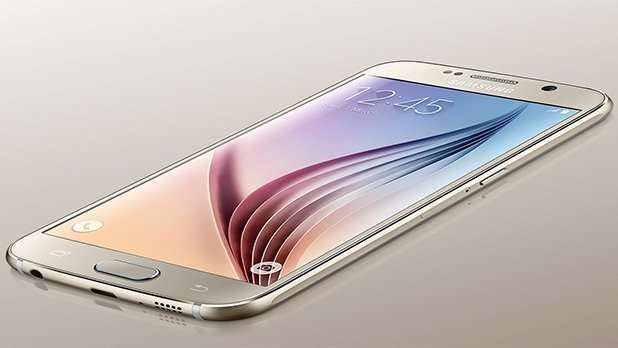Tech review: In Galaxy S7 and S7 Edge, Samsung has dynamic duo

Flagship phones - there are more than a few released throughout the year.
Apple has the iPhone 6S and 6S Plus.
HTC has the One M9+, and LG has the V10 and G4.
Samsung has the Galaxy, Galaxy Edge and Note.
This week I've been testing the Galaxy S7 and S7 Edge, which bring back some popular features missing in last year's S6 models.
The S6 and S6 Edge were released at the same time last year; both had a 5.1-inch screen. Some people thought the S6 was a step back from the previous year's S5.
Gone were some popular features, including fast USB 3.0 ports, microSD card slots, water resistance and removable batteries.
Samsung took some of that complaining to heart, and the S7 models have a few familiar features.
Let's look at what we got back in this year's phones.
GALAXY S7
The smaller of the two handsets, the Galaxy S7, looks much like last year's S6.
It has a 5.1-inch AMOLED screen with a resolution of 2560x1440 pixels for a pixel density of 557 pixels per inch.
Inside there's a quad-core Snapdragon 820 processor (two 2.15-GHz cores and two 1.6-GHz cores) with 4 gigabytes of RAM and 32 gb of internal storage.
While there isn't a 64-gb or 128-gb version, Samsung is bringing back external storage via a microSD card slot inside the SIM tray.
The main camera has a 12-megapixel sensor with optical image stabilization. The front camera has a 5-megapixel sensor.
I found the camera to be as good as any I've seen on a smartphone, including the iPhone 6S.
The S7 runs Android 6.0 (Marshmallow) with Samsung's TouchWiz interface and has a 3000-mAh battery.
It's IP68 water resistant, which means it can spend up to 30 minutes submerged in 3 feet of water.
Physically, the S7 is 5.85 inches by 2.85 inches by 0.3 inches and weighs 5.36 ounces.
Connectivity is through Bluetooth 4.2 and Wi-Fi 802.11a/b/g/n/ac.
The phone has NFC, which is used for pay-by-phone apps including Samsung Pay. It has Qualcomm Quick Charging as well as wireless charging.
The home button has a fingerprint sensor, and there's a heart rate sensor.
Galaxy users lose the IR blaster from the S6 models, so there's no universal remote capability.
I wonder which people used more - the IR blaster or the heart monitor?
GALAXY S7 EDGE
On the inside, the S7 and the S7 Edge are the same. The CPU, memory, storage configuration and cameras are identical.
For 2016, Samsung give the S7 Edge a slightly larger 5.5-inch AMOLED screen with the same 2560 by 1440 pixel resolution for a pixel density of 534 ppi.
It measures 5.94 inches by 2.86 inches by 0.3 inches and weighs 5.54 ounces.
The larger screen (and case) means Samsung can use the extra space for a larger battery. The S7 Edge has a 3600-mAh battery.
But alas, the batteries are sealed inside the phones.
Samsung is doing some good things with screens and batteries, as there is an "always on" option showing the time and date and other notifications even while the phone is locked and sleeping.
It's just like a screen saver on your computer.
Samsung says the Always On feature's battery drain is minimal.
WHERE TO BUY?
Interestingly, Samsung does not sell its phones directly to consumers like Apple. In order to get an S7 or S7 Edge, you'll need to go through your phone provider.
They are available from all the major (and most minor) carriers.
Prices and terms can vary, especially when you're spreading out the payments. Check around for deals, but you'll probably get yours through your phone company.
A quick check online showed the S7 going for $669 to $699 and the S7 Edge going for $779 to $799, depending on your carrier.
Some carriers are running buy one, get one free for certain plans, and almost everyone is offering a free Gear VR (virtual reality) headset with the purchase of an S7 or S7 Edge.
Decisions, decisions.
Samsung obviously sees a market for both phones - but which one to pick?
I suppose this year they've made it a little easier to choose if you pick your phone based on screen size.
The Edge is just a smidge bigger, but it does have that interesting-looking curved screen.
I still think the screen edges are a gimmick, but someone must be using those edges.
Both phones have gained some curved refinements on their backsides. They are easier to hold and to pick up than the S6 models.
Since Samsung is forcing us to make a choice, mine would be for the S7.
I like the smaller case size, since I tend to carry my phone in my back pocket.
The phone I carry is the iPhone 6S, which has a 4.7-inch screen, so the S7's 5.1-inch display is a logical choice for me.
I'm always curious about why people choose the phones they do, so feel free to send me an email and let me know what drives your decision.
—-
Pros: Fast, water-resistant, external storage, best camera on a smartphone
Cons: Still no USB 3.0 speeds. Can't swap batteries
Bottom line: Nice job, Samsung. Both phones are quite impressive.
©2016 The Dallas Morning News
Distributed by Tribune Content Agency, LLC.





















